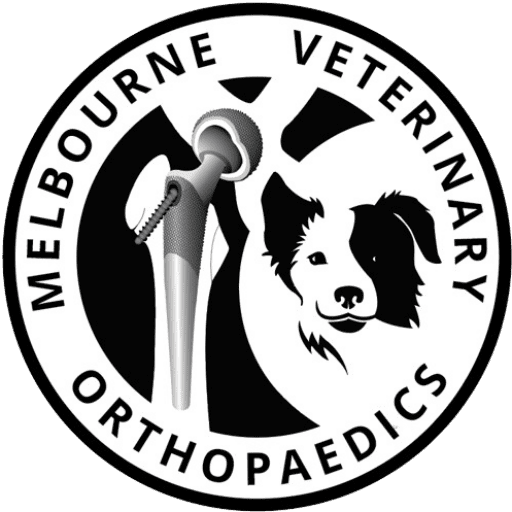Useful postop information
Overnight care
Overnight veterinary hospitalisation refers to situations where pets need to stay at a veterinary clinic or hospital overnight for monitoring, treatment, or recovery from surgery or illness. It ensures that pets receive medical attention and care throughout the night when they are critically ill, injured, or recovering from a procedure.
Why have Overnight Hospitalisation at MVO
- Post-Surgery: Pets who have undergone surgery: TPLO / fracture repair / spinal surgery, BOAS airway or major abdominal surgery, benefit from direct monitoring to ensure they recover Nursing staff are present to address excessive anxiety / hysteria (which can be impossible to predict before surgery), bleeding and pain.
- IV Fluids: Continuing intravenous fluid therapy after major surgery supports hydration, helps maintain blood pressure, and prevents dehydration. This approach can also be used to deliver medications that are unsuitable for administration by other methods through constant rate infusions.
- Medications: nurses will administer antibiotics, anti-inflammatories and other medications like anti-nausea / anti-vomiting medications the night of surgery. Often multiple sedatives are given sequentially to effect in anxious patients.
- Pain Management: Pets experiencing pain may require overnight hospitalization to receive medications that cannot be safely administered at home by their owners. The strongest pain-relief options are injectable-only treatments, which may need to be given as frequently as every four hours, or more often if required. Additionally, nurses are trained to monitor pain levels closely and can adjust doses to ensure each pet receives the right level of relief.
- Peace of Mind: It is stressful to care for your pet at home the night after surgery if you are not trained in animal husbandry and nursing. Often they will be disoriented, sedated or painful the first night. Most pets are far improved by the following morning when due to be discharged after most drugs have left their system.
- Husbandry: Unfortunately, due to the stress experienced by pets in pain and in unfamiliar surroundings, many develop diarrhoea. Our staff will clean and bath your pet if required and reapply dressings / bandages. They will also walk dogs if recommended by the vet and be offered food and water.
- Nursing Checks: The majority of our patients will be checked every 2 hours and have their core body temperature, heart rate and respiratory rates checked. If any particular patient is cold, nurses will arrange for forced warm air and more blankets, hot water bags and heating mats. If your pet is too hot, fans can be applied and bedding removed in stainless steel cages.
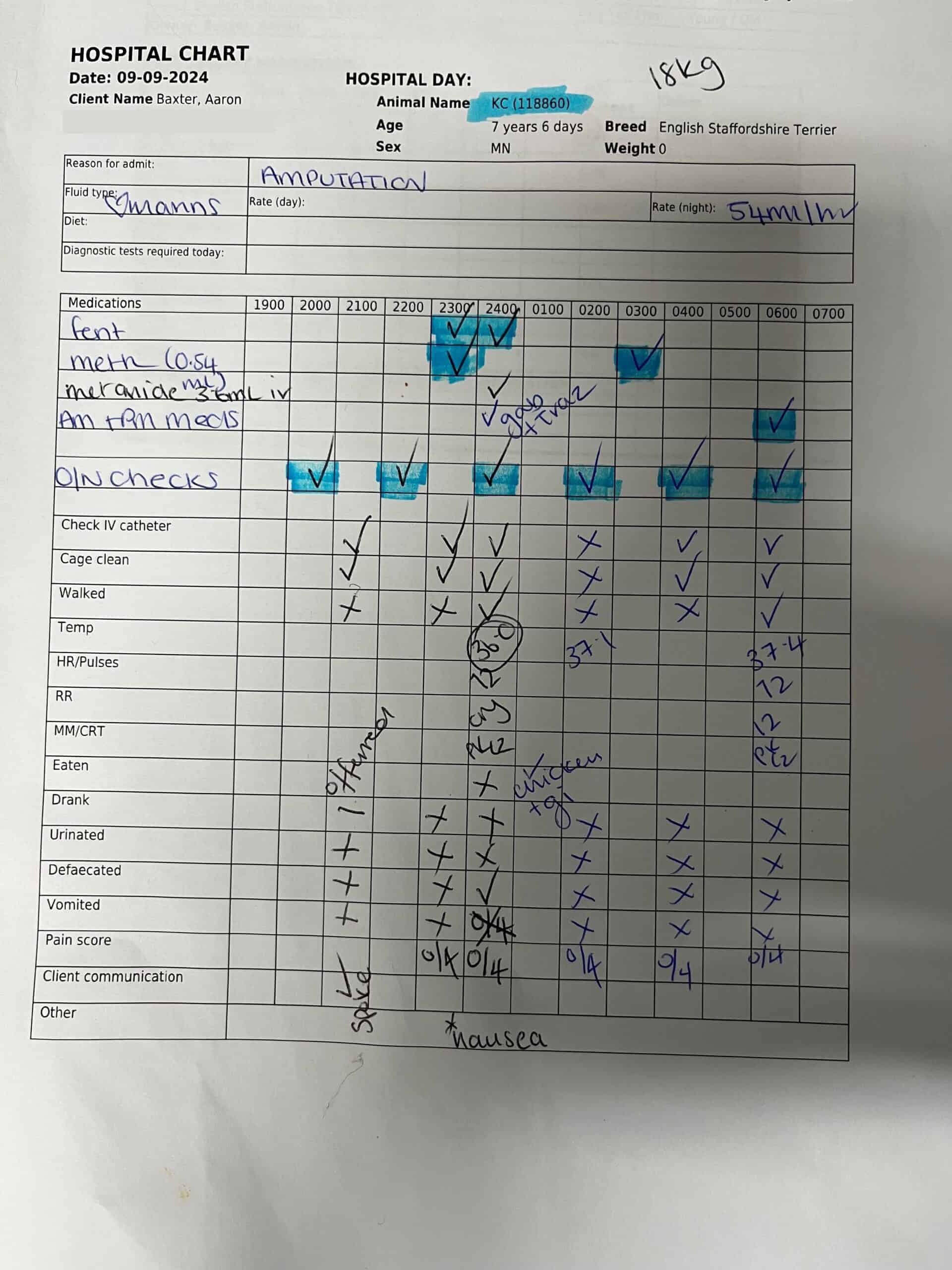
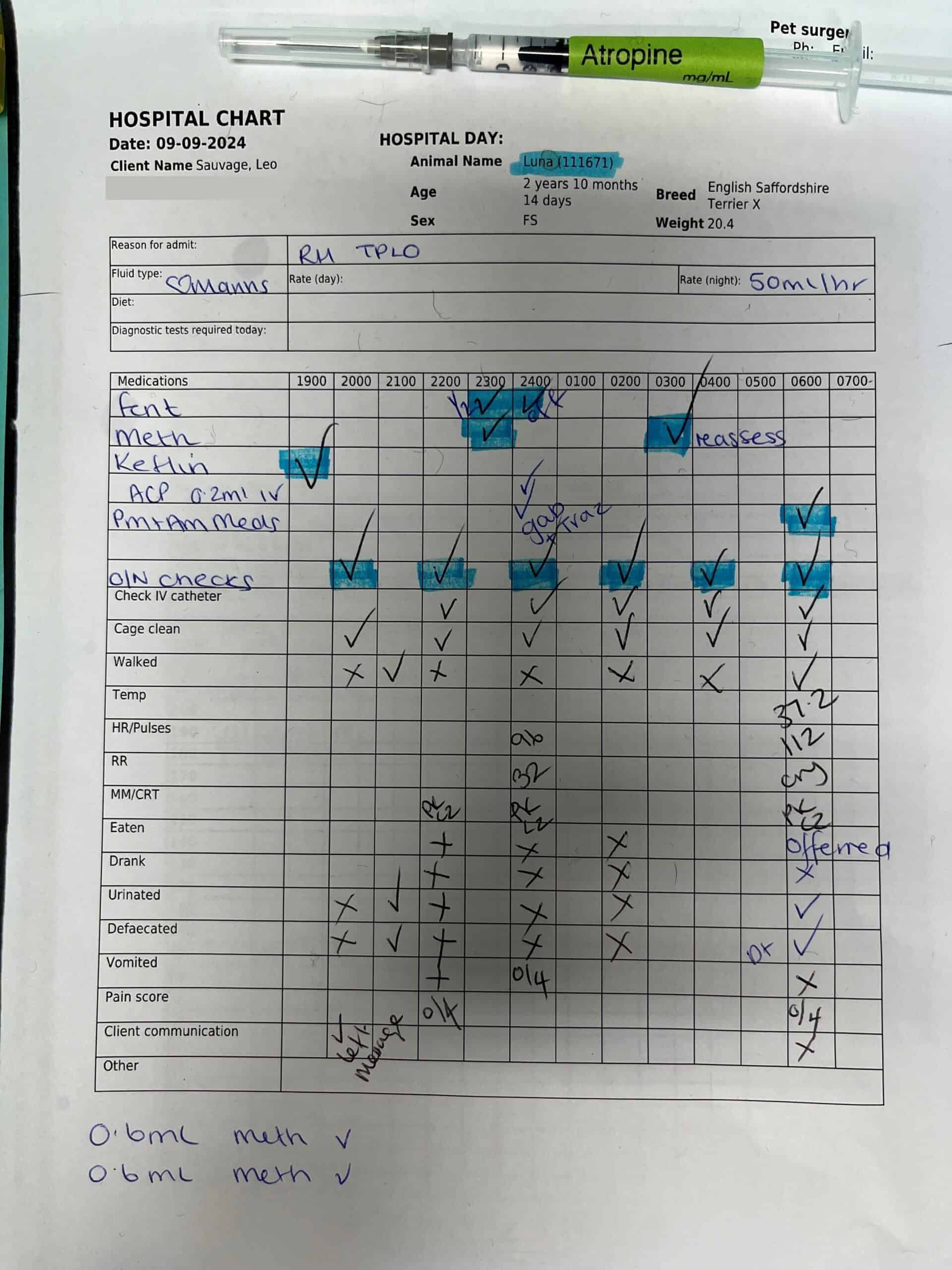
What to do after surgery to care for your pet
Pets recover optimally in a familiar low stress quiet environment. You want them to rest and sleep. Typically, vet clinics are noisy, unfamiliar and have unfamiliar smells overstimulating patients. It is ideal to have them observed and medicated in a vet hospital until it is safe to have them at home where home care begins. Remember it’s a “marathon not a sprint”, meaning most major operations, other than keyhole joint surgery, will require prolonged exercise restriction and rest.
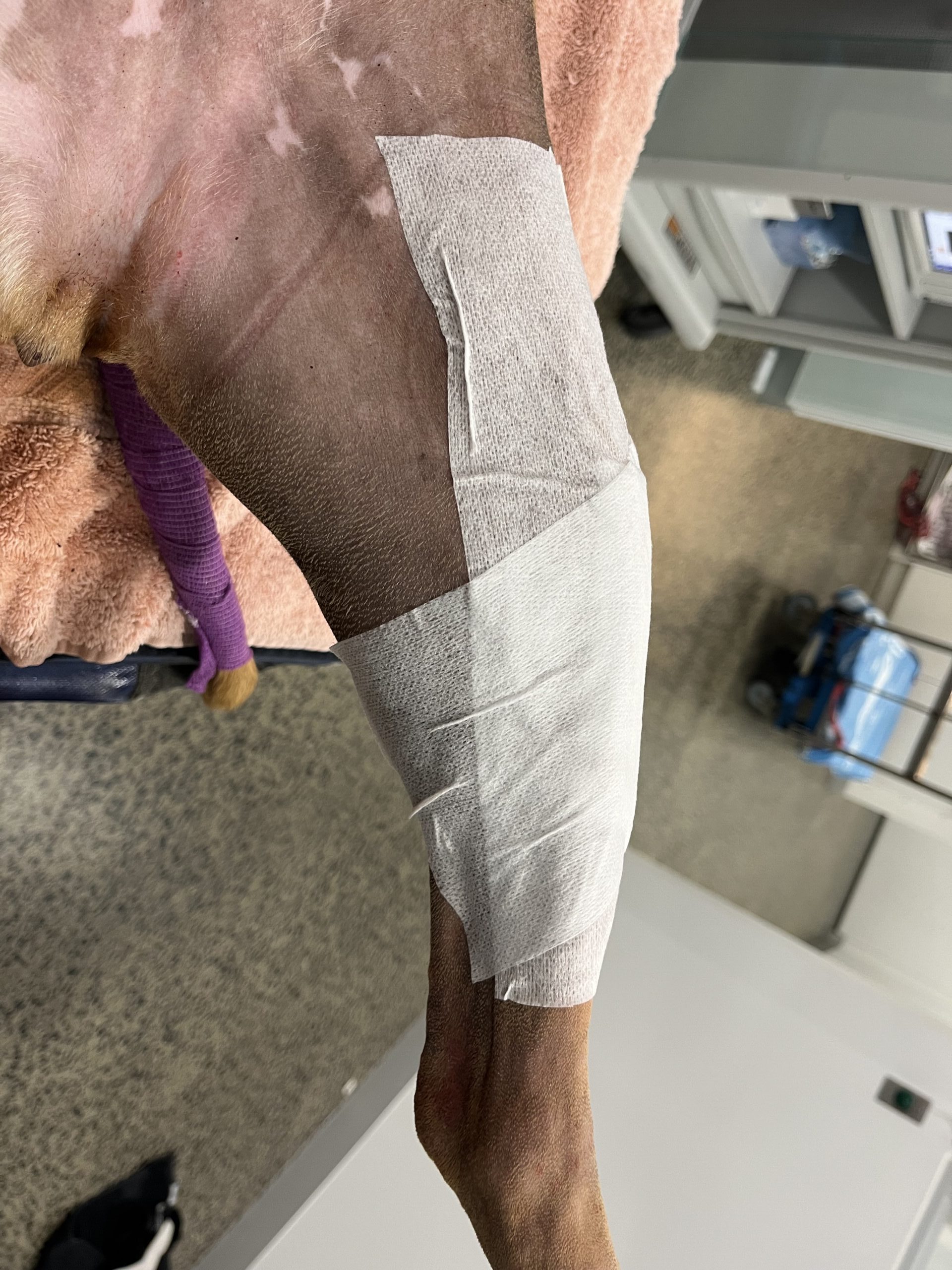
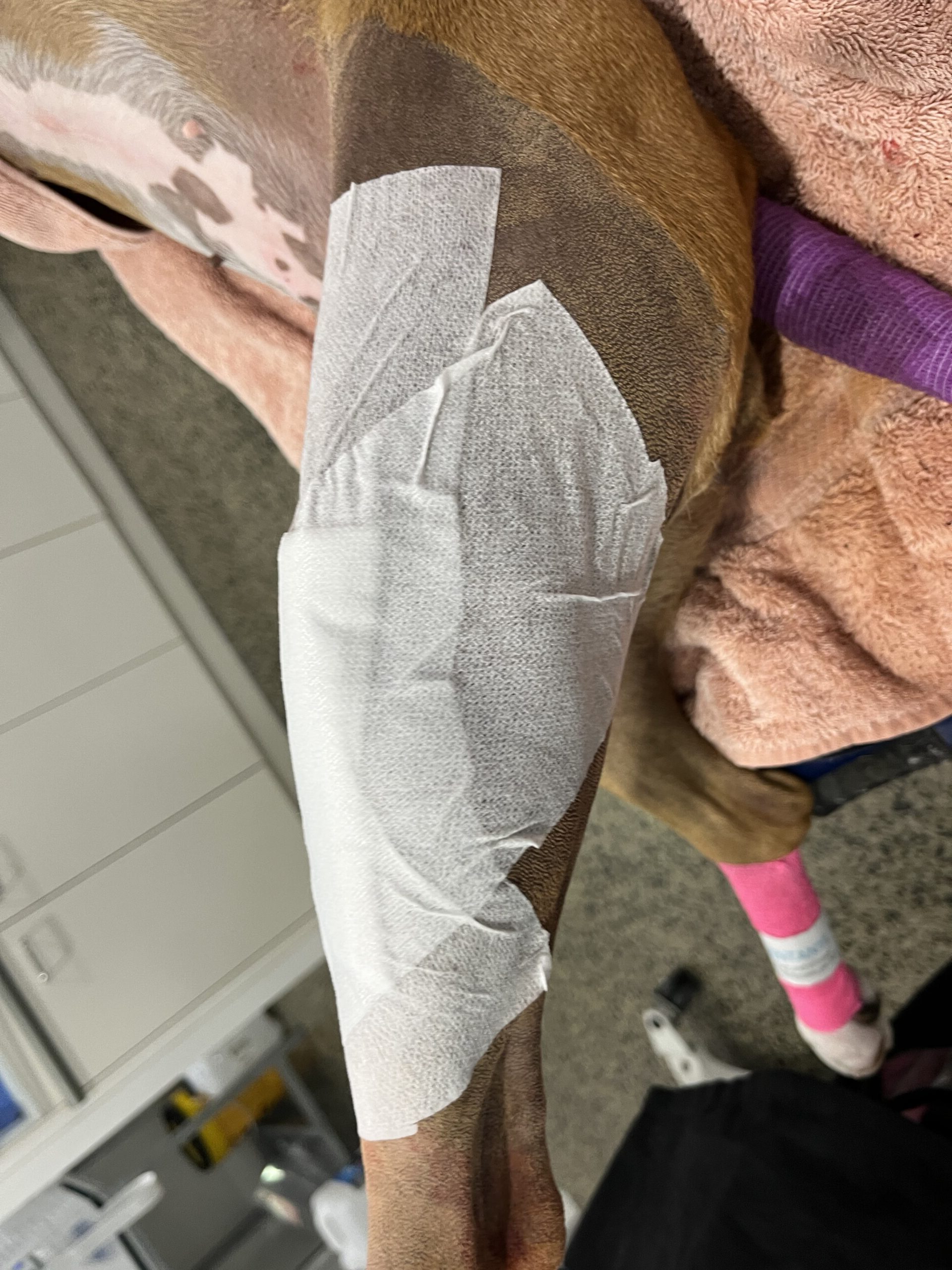
Adhesive wound dressing applied to cover and protect surgical incision.

Pain management after surgery
Contact your vet immediately if you are worried about excessive pain. Both dogs and cats benefit from reduced post-surgical pain. There are many drugs that are safe and effective which can be dispensed to give at home. Occasionally, your pet will require admission to a 24 hour hospital to provide increased care relative to what you had been providing at home.
Typical medications after surgery to address pain and anxiety
Injections for strong pain relief are administered in hospitals by veterinary staff. At-home treatment options may also include oral medications to reduce inflammation, manage discomfort, or ease anxiety, as well as alternative delivery methods such as transdermal patches.
Pet activity after surgery
Almost all surgical procedures require limited stress on healing tissues for optimal recovery. Bone heals too but if the patient overuses the limb it can slow, delay or even limit healing. No client wants to pay for further revision surgery. Keeping animals contained after surgery can be challenging. Often the most practical and effective approach is to ensure pets are in a wire crate to limit movement and stop running and jumping.
Using the affected limb after surgery
If surgery has been performed with limited soft tissue dissection and secure well positioned implants, many pets will begin to use their limbs immediately or within a few days after surgery. This is normal and a sign that things are going well and as planned. Deterioration in limb use is often cause for concern and means something may be going wrong internally. Seek vet attention if this is the case to avoid early problems turning into major complications.
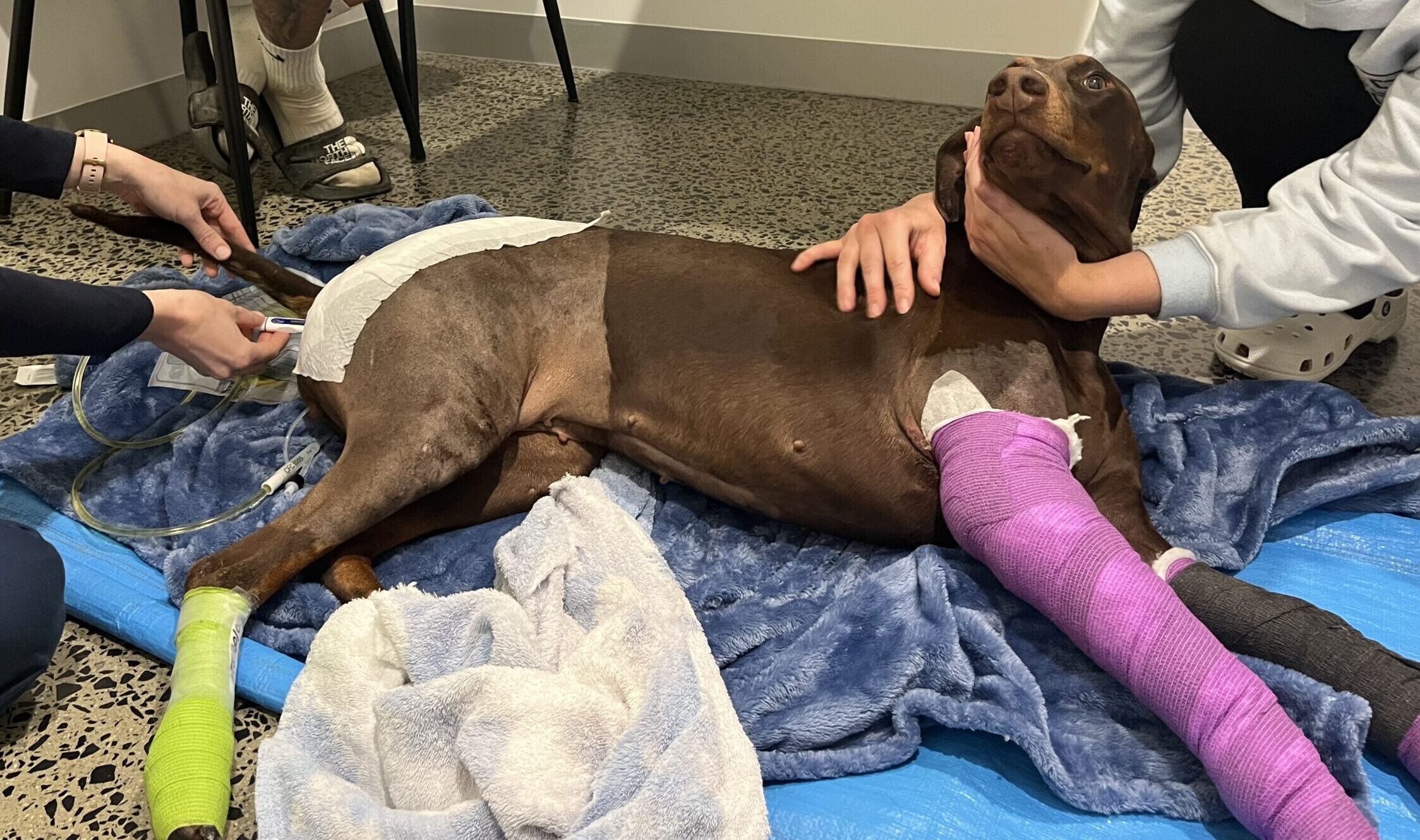
Walking your dog after orthopaedic surgery
Generally, it is safe to allow loading of the affected limb which means standing after surgery and gentle controlled walks. Having your pet lift the affected limb off the ground and protect it may seem normal but it is preferred to have weight bearing on the limb to maintain muscle and joint health. Often a slow walk on a short lead encourages dogs to use the limb.
What happens if a problem develops post surgery?
Complications can and do occur for a range of reasons. Sometimes surgery is risky but necessary. Other times, a problem develops when it is not expected. Your first point of contact is the vet and nursing team where the service was provided. Call that business and ask questions. If you are concerned, make an appointment to return for a checkup. Many problems can be addressed with a satisfactory resolution.
What are the ongoing costs after surgery?
Often the first recheck after a major operation is included and there is no additional cost. This would also typically include bandage and suture removal. Owners should expect to pay for additional unexpected medications, x-rays and any further anaesthesia and surgery. If a care package was agreed before surgery, all costs associated with the index surgery will be covered.
Alternative to using traditional neck positioned collar to stop dogs licking wounds. These slings are light, breathable and versatile.
This video shows excellent function a few days after an ankle fusion to manage end-stage arthritis. The owner have been using the E-collar and confining to the house only.
Crate confinement
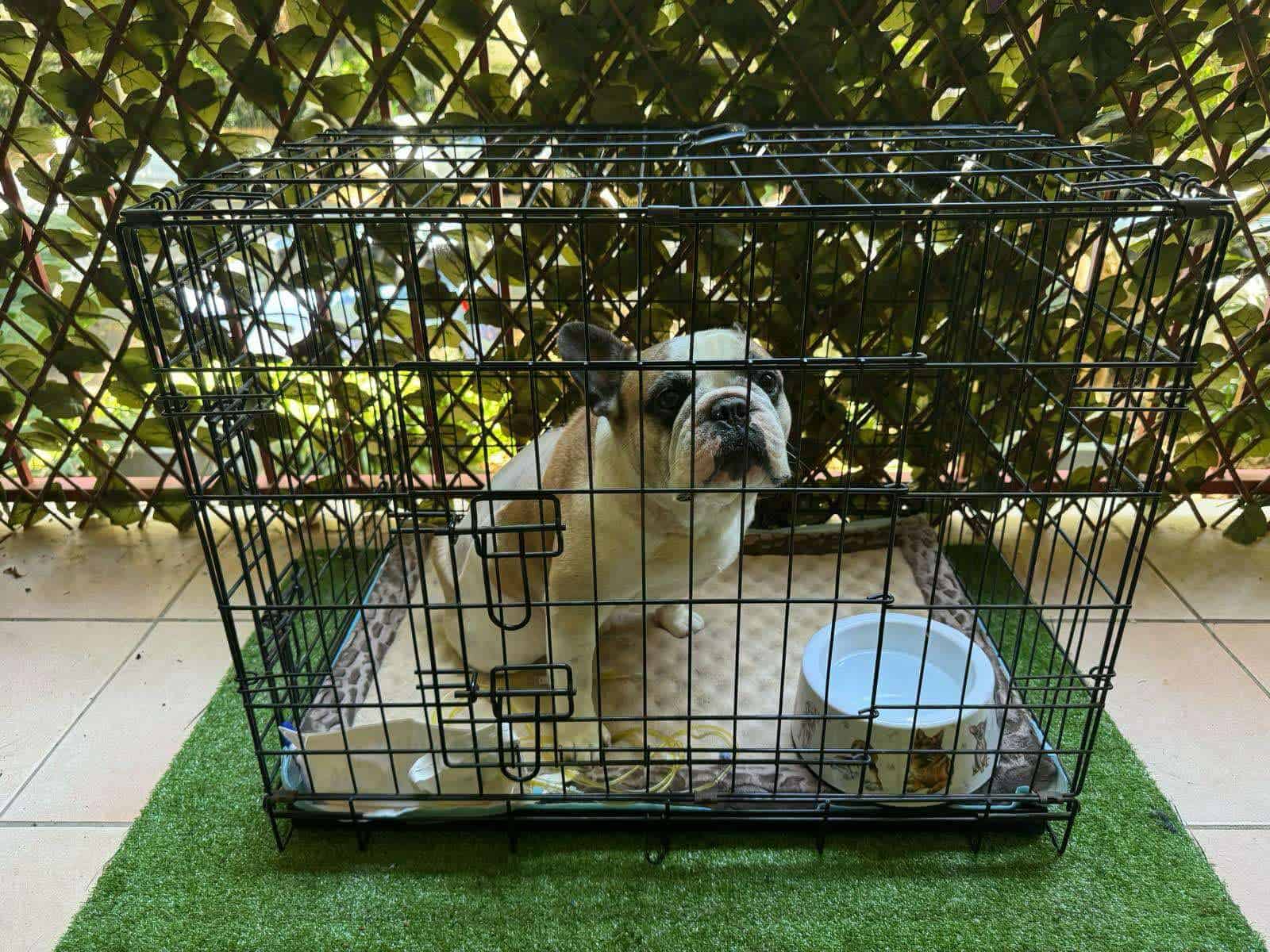
Crate confinement at a veterinary hospital can be a necessary part of a pet’s treatment, especially for recovery after surgery or during illness. Here are some key points to consider:
- Purpose: Crate confinement helps ensure that pets remain calm and do not engage in activities that could hinder their recovery, such as jumping or running.
- Duration: The length of confinement varies depending on the pet’s condition and the veterinarian’s recommendations. It can range from a few hours to several days.
- Comfort: It’s important to make the crate as comfortable as possible. Adding a soft blanket, familiar toys, and ensuring proper ventilation can help reduce stress.
- Monitoring: Veterinary staff typically monitor pets in crates to ensure they are stable and not in distress.
- Owner Communication: Hospitals often provide updates to pet owners regarding their pet’s condition and any changes in their care.
If you have specific concerns or questions about your pet’s situation, it’s best to discuss them directly with the veterinary staff.
Crate confinement after surgery
Client Tips & Tricks
As much as we have the knowledge and expertise to perform surgery on your pets, we have learnt helpful tips and tricks from some of our pet owners. These are things they found worked for them and their pet, please know that these tips may not work for everyone.
This particular client bought a cage from Bunnings it comes with 8 panels in total. with removable pins so you can open from any panel. They found it to be more sturdy and secure than what is sold in pet shops.
They have wooden floors, so the day they dropped her off for surgery, they lined the floors from bedroom to deck. On the deck they used grass mats and inside an antifatigue mat, so their dog wouldn’t slip after surgery.
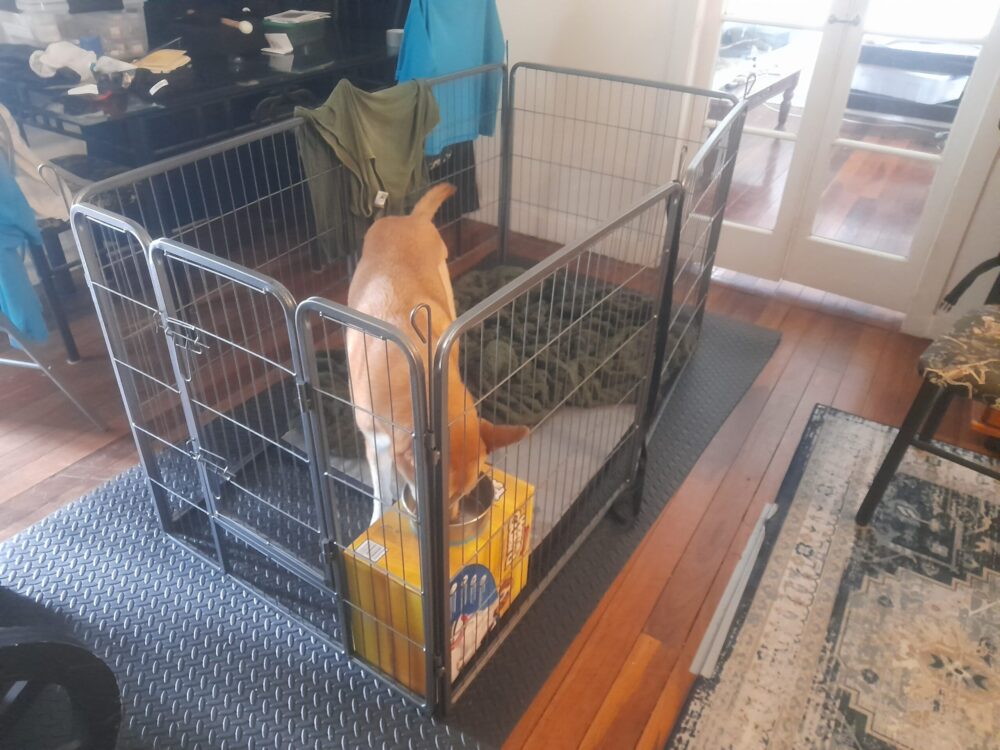
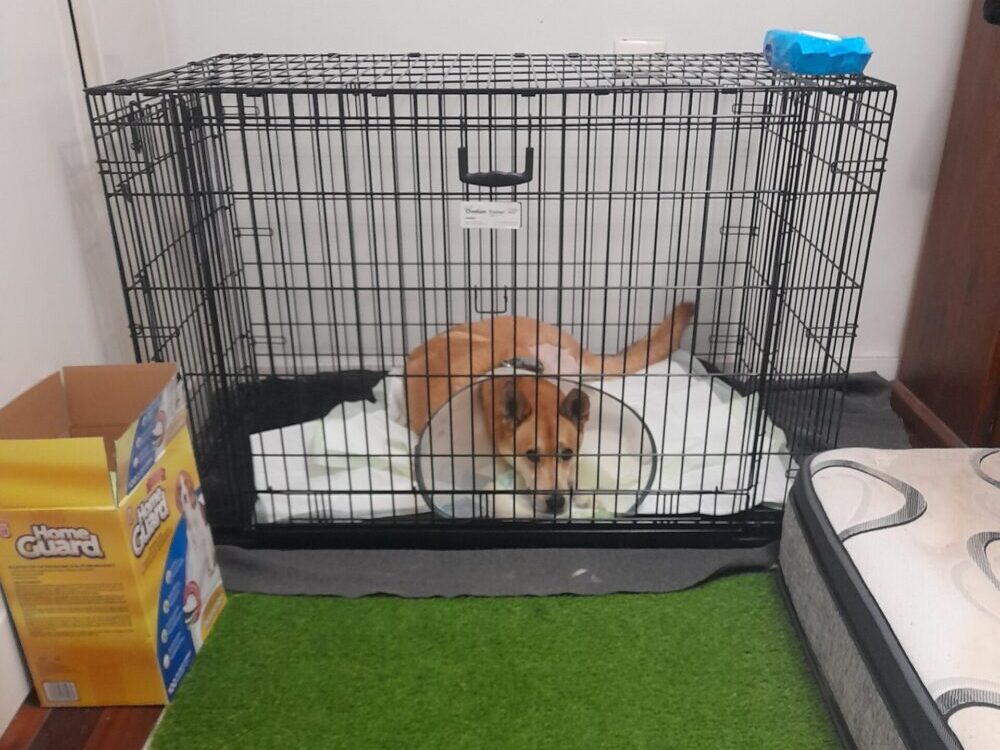
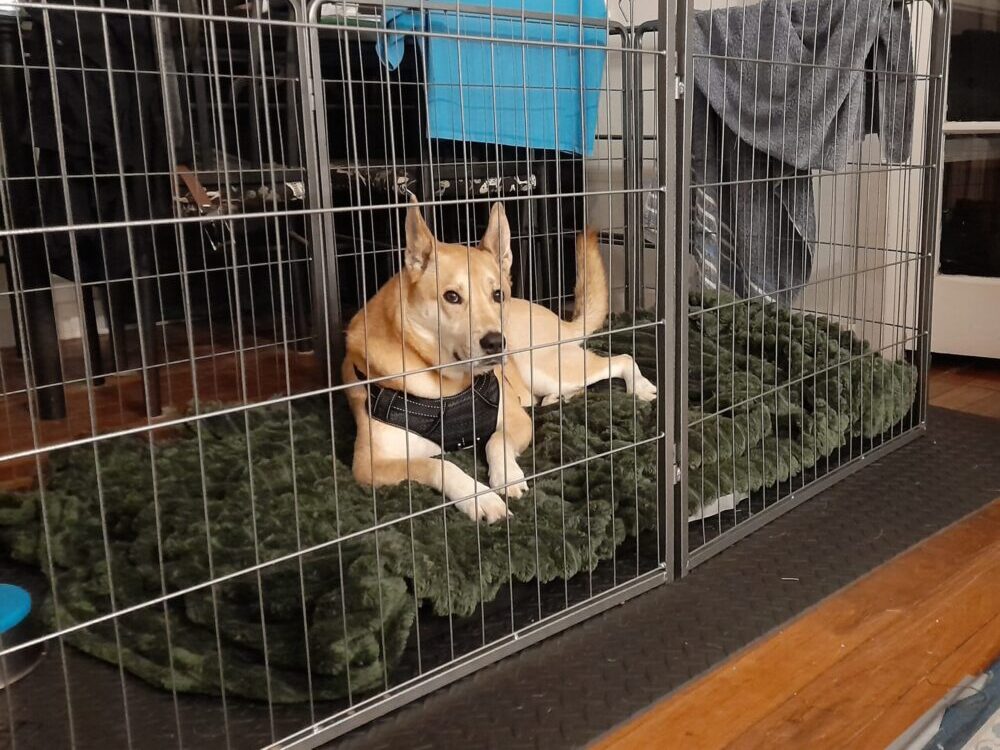
Helpful Product Details
| Product | Supplier | Price |
| SELECTA Multi-purpose animal enclosure | Bunnings | $160 |
| Grass mats | Bunnings | $20 each |
| Antifatigue mats | Reject Shop | $27 each |
*disclaimer: prices and availability may be subject to change, this is what was available to this particular client at this point in time.
